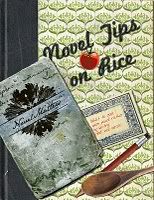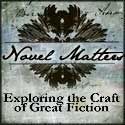

As I’ve
mentioned before, Ray Bradbury is one of my favorite authors. I was fortunate
to hear him speak in 1990 and have him sign one of his books, The Halloween Tree. I read it again this
week and was awed at his ability to pull readers along with the action. Fly,
actually. Hanging on for dear life, just as the characters were doing in the story.
The story is
about eight trick-or-treaters who embark on a wild chase through time led by
Carapace Clavicle Moundshroud to find one of their missing gang, Pipkin. Pipkin is the bees knees and they can’t have
Halloween without him. But something’s gone wrong with Pip on this night and
they don’t have much time to save him.
Here are
some reasons why I think the book works so well:
- The pacing takes the reader on a breathless ride utilizing sentence structure and fine-tuned tension. Pip is always just out of reach, in a mummy’s tomb, on the rooftop of Notre Dame, in a Mexican graveyard. The author’s avalanche of one, two and three word sentences gives the illusion of racing with eight little boys pulling you along by the hands and shirttail, crying, “We gotta find Pip!” It also creates a lot of white space which encourages the eye to skim along the page faster.
- His use of description solidifies the setting – cements our feet right down to it. “Wham. Eight front doors banged shut” is much more powerful than ‘the boys came out of their houses.’ When they create a kite from old circus posters from the side of a barn, it becomes a mosaic of talons, claws, lion’s fangs and tiger eyes. They hear “roars of Africa down the wind.” A review in the New York Times called his ‘frenetic imagery’ a ‘great treat.’
- His characters are endearing. On the day Pipkin was born “all the Orange Crush and Nehi soda bottles in the world fizzed over.” The seat of his pants is full of splinters from fences and he’s the kind of kid who would run back and help a friend finish a race. The other boys are brave and noble, especially in the end when they each make a sacrifice for Pip's sake.
- Delicious active verbs make the action a feast for the tasting. “...something dark frittered and danced and slithered away…” Mr. Moundshroud’s house “leaned after them with soft groans.” As for the jack-o-lanterns hanging on the Halloween Tree “Sparks leaped out of their ripe-cut ears.” He uses softer, sibilant sounds or harsher consonants to set different tones.
- His clever use of simile and metaphor creates memorable visuals. “Like a big spider with many legs, the boys tried to cram through the door” and “the windows blinked wide their ghastly eyes” says it better than narrative ever could.
Do any of
these strike a chord with you? Do you
see a writing technique that could enrich your writing? We’d love to hear!












6 comments:
That does it. Another book on my TBR list. We do learn so much about writing from reading great stories, consciously or subconsciously.
Exactly what I was going to say, Patti. I'm going to the library today and will put on hold what I'm reading to read The Halloween Tree in time for Halloween. Great post, Debbie, with points and examples of what great writing should be. Great writing inspires great writing, end of story.
Set aside enough time to read it in one or two sittings. :-)
Sounds like a wonderful book. I have heard that short sentences create an action packed pace. I like the idea of creating white space on the page and therefore; speed.
The wonderful thing about this story is that the pace makes you feel like you're tagging along with those 8 little boys - run, jump, fly!
Debbie, I'm loving it.
Post a Comment